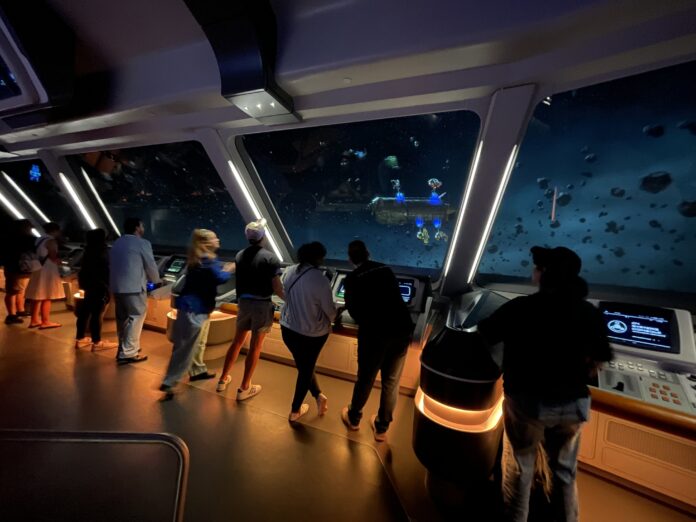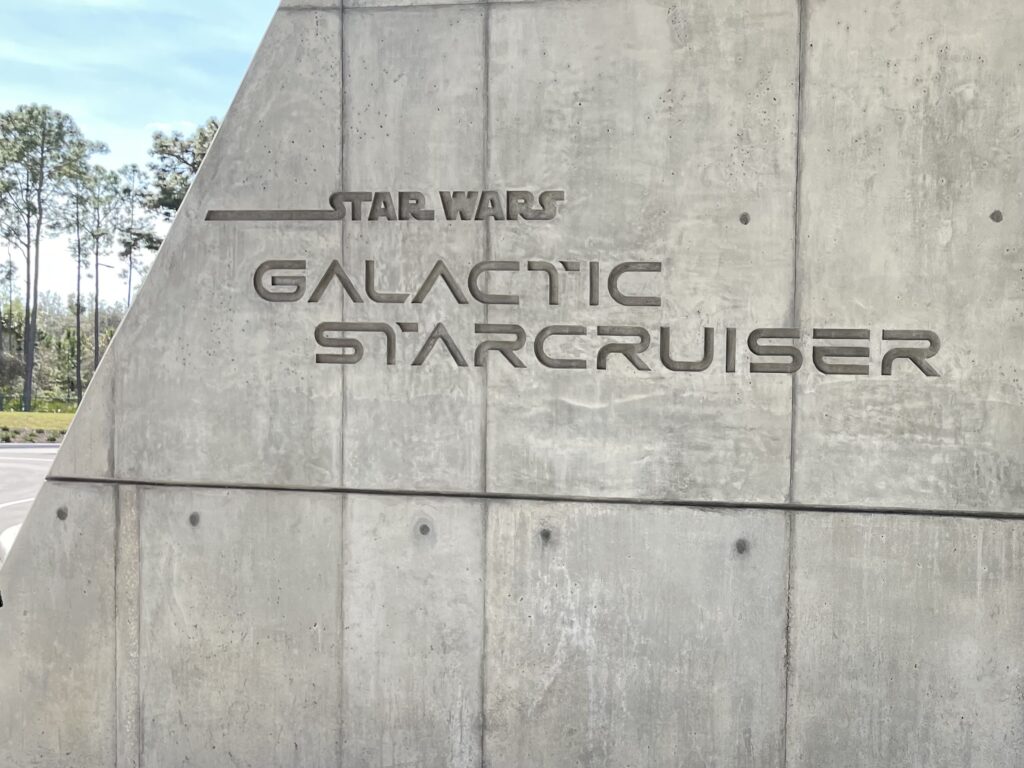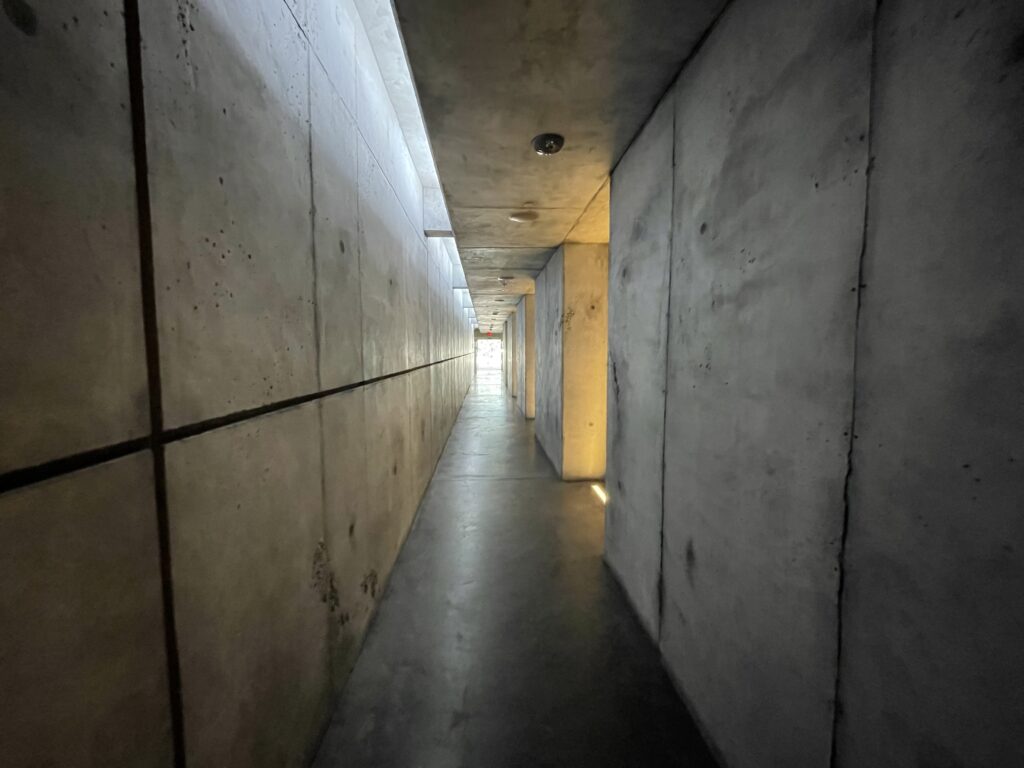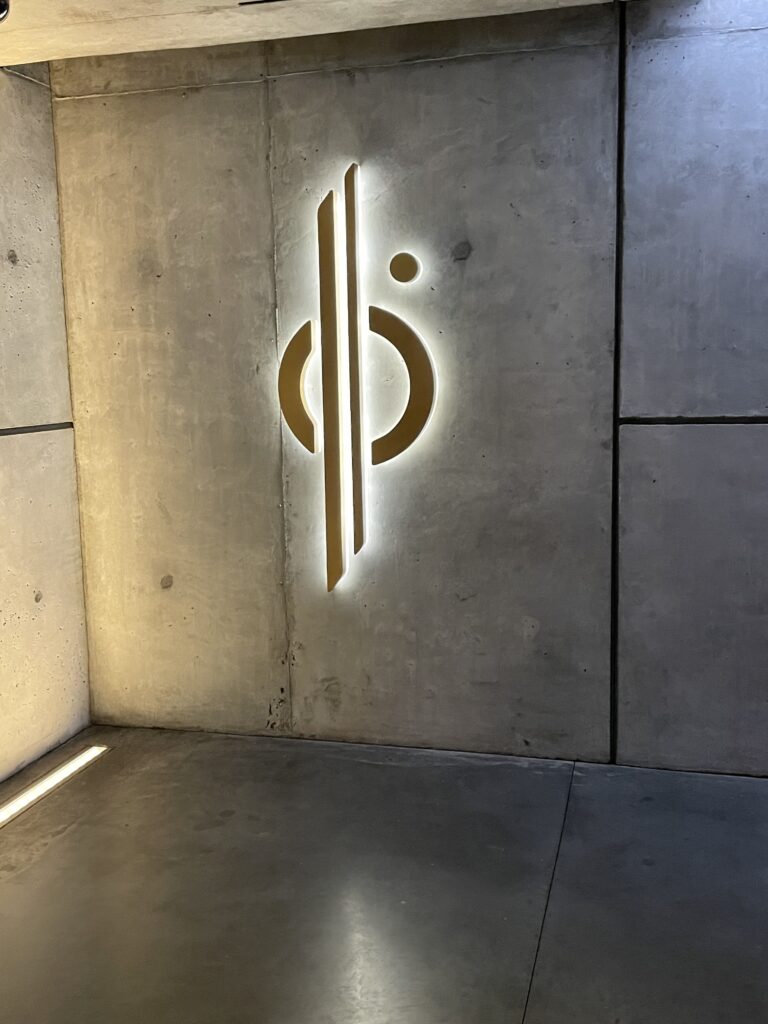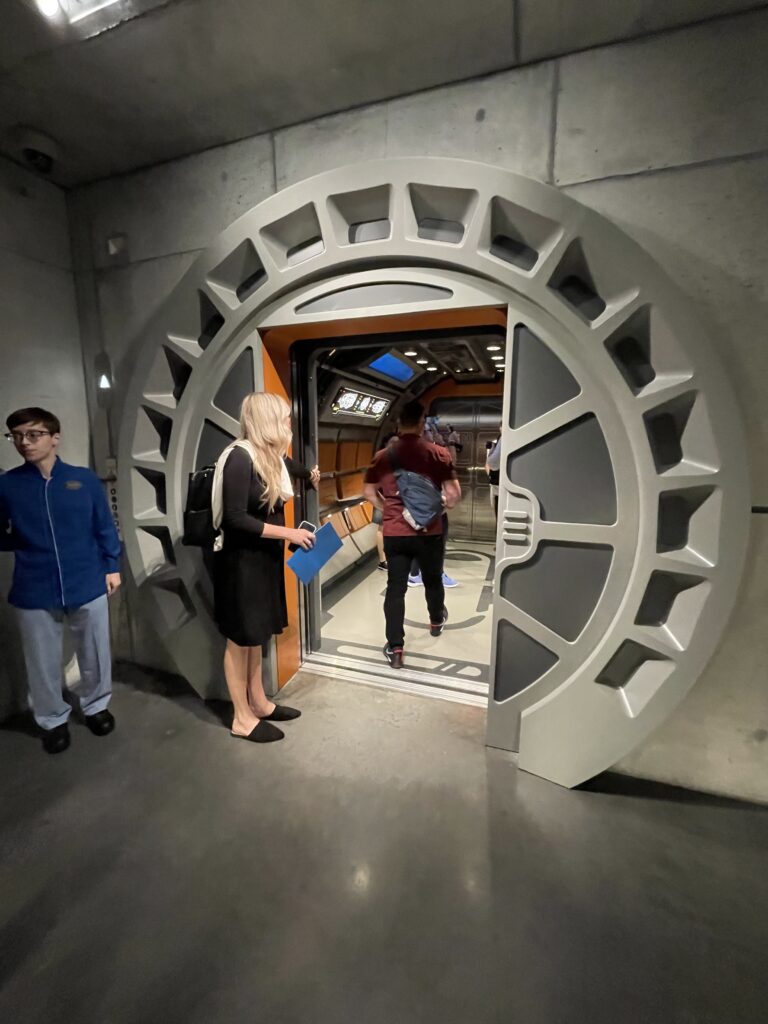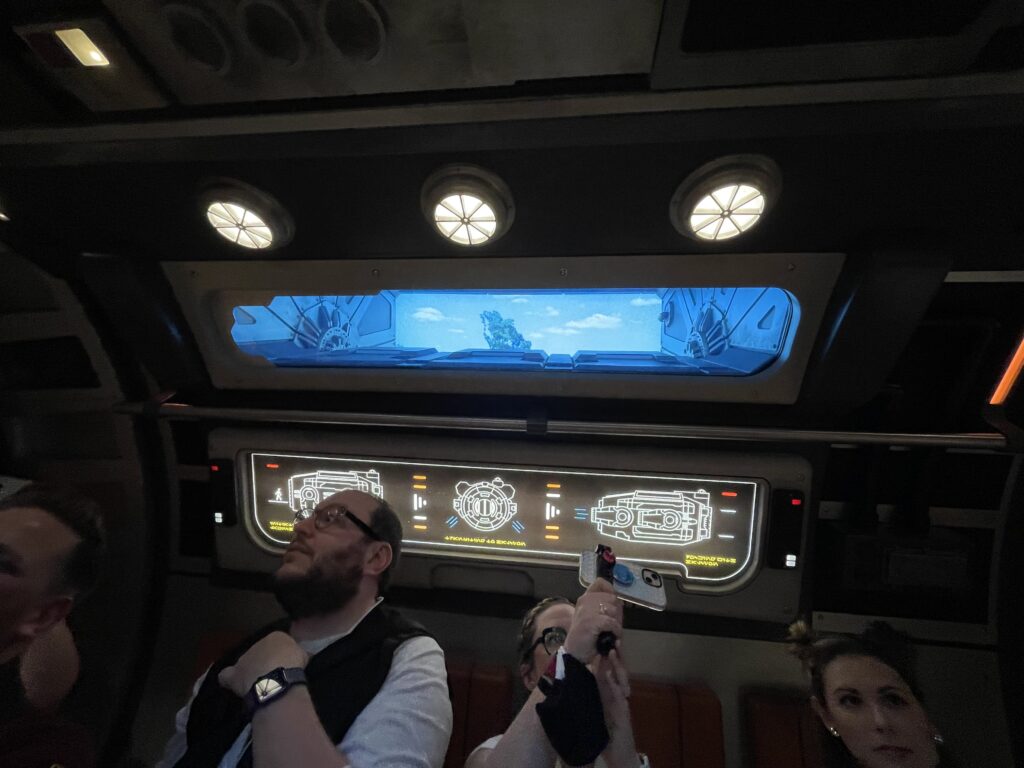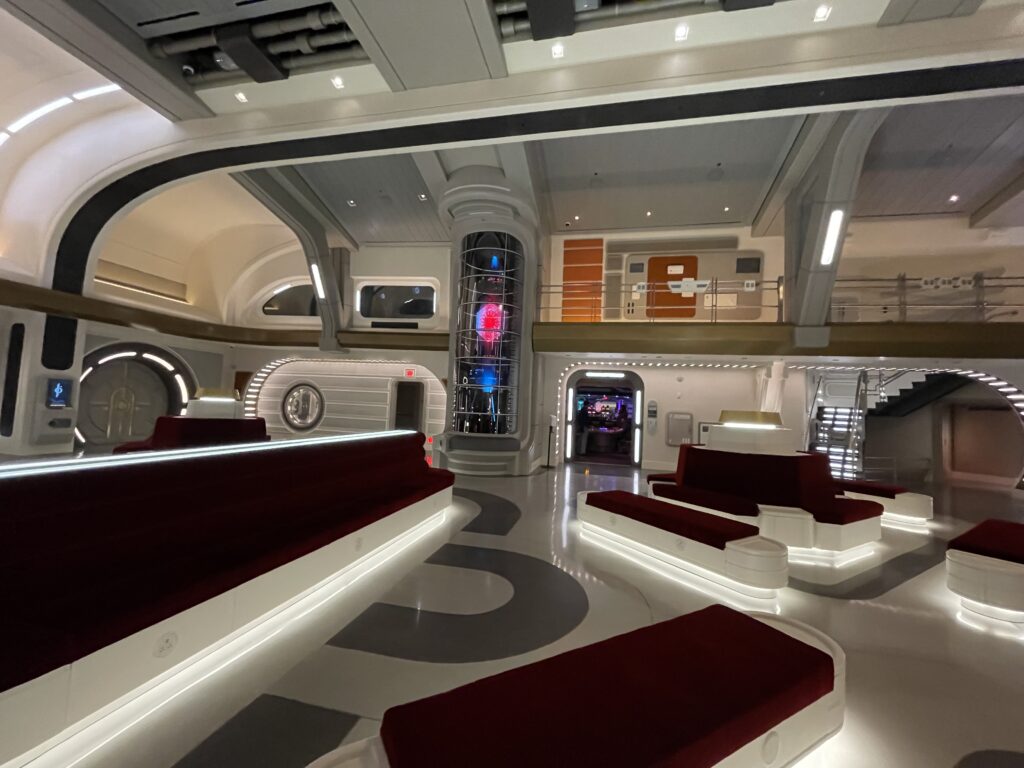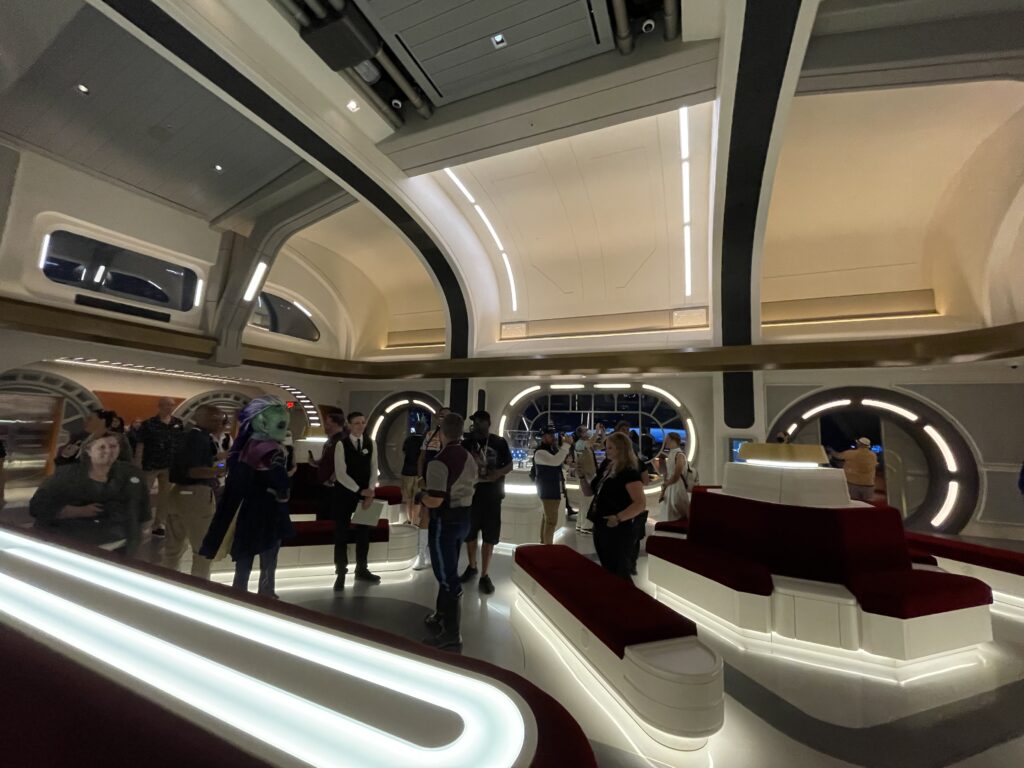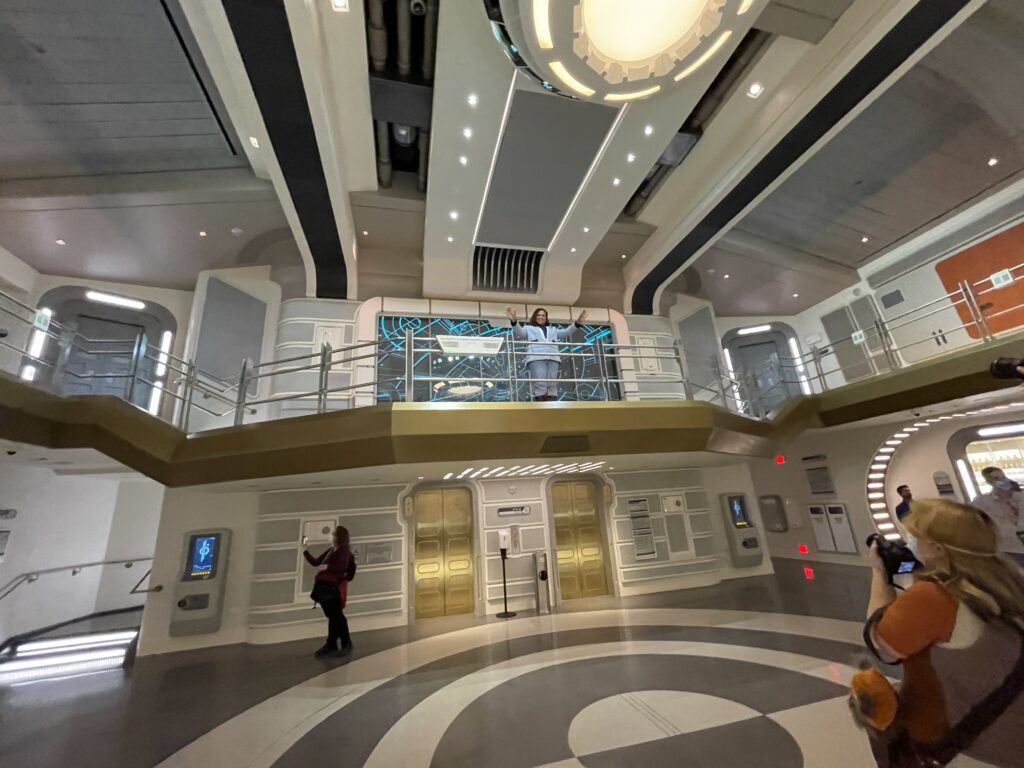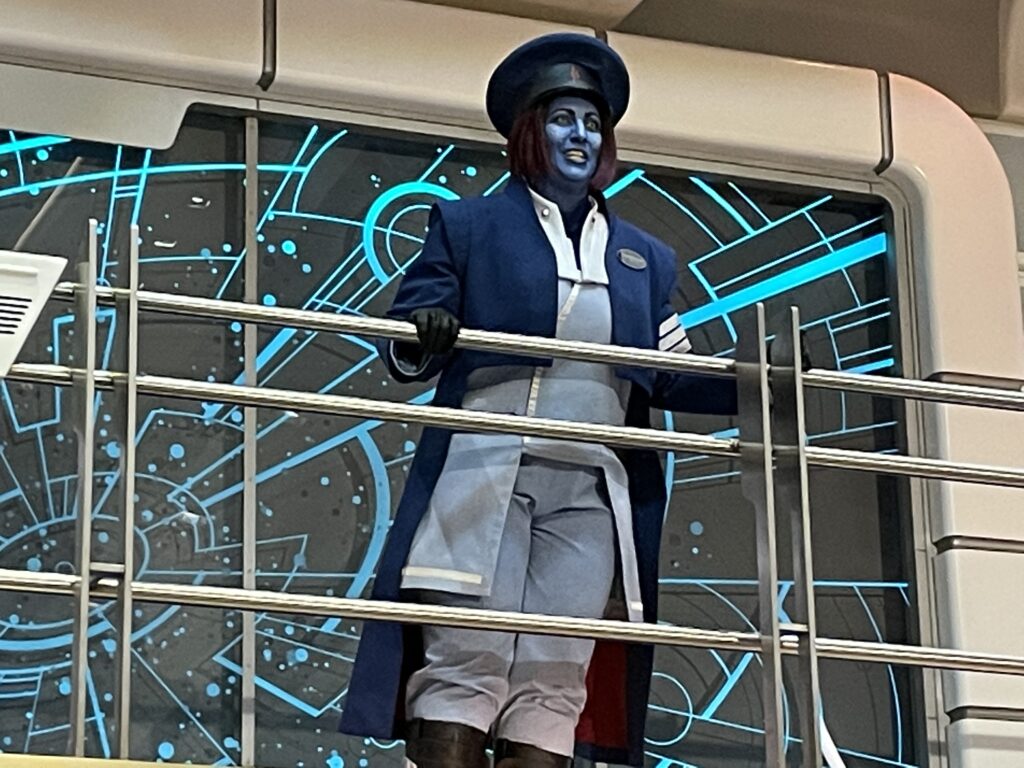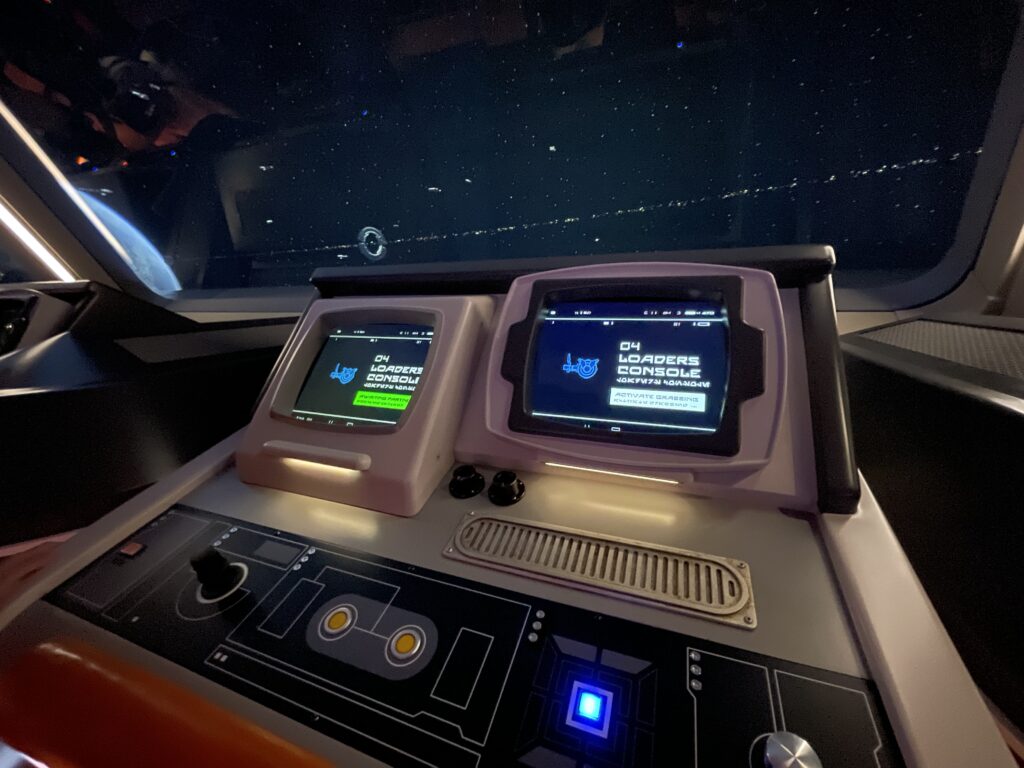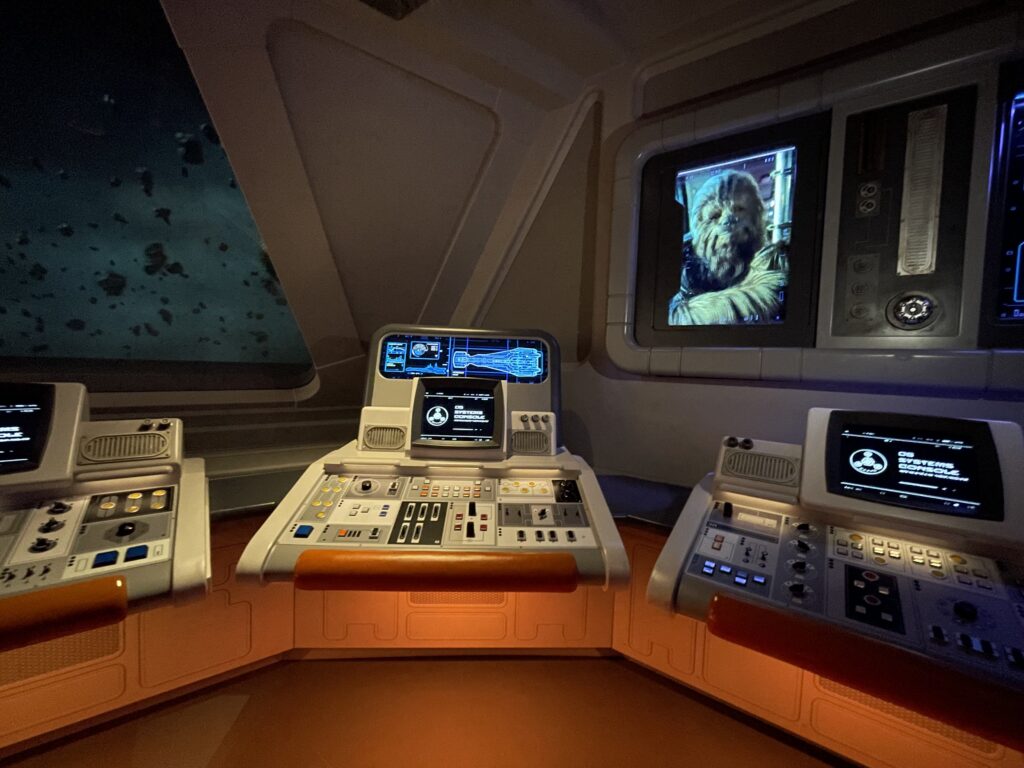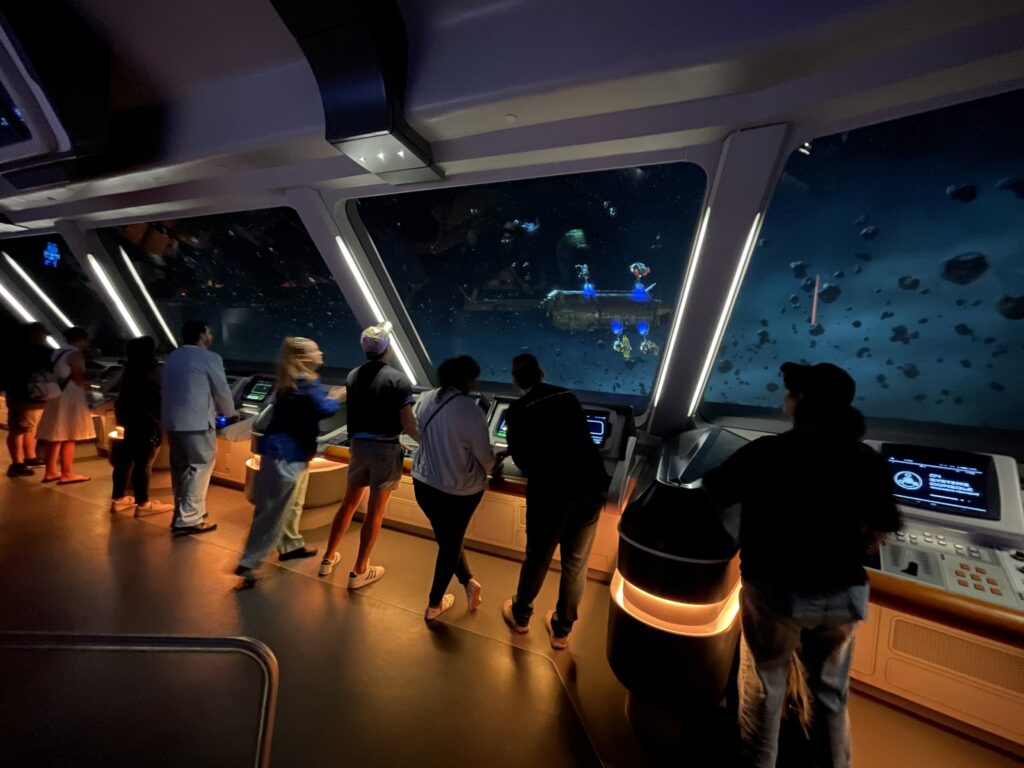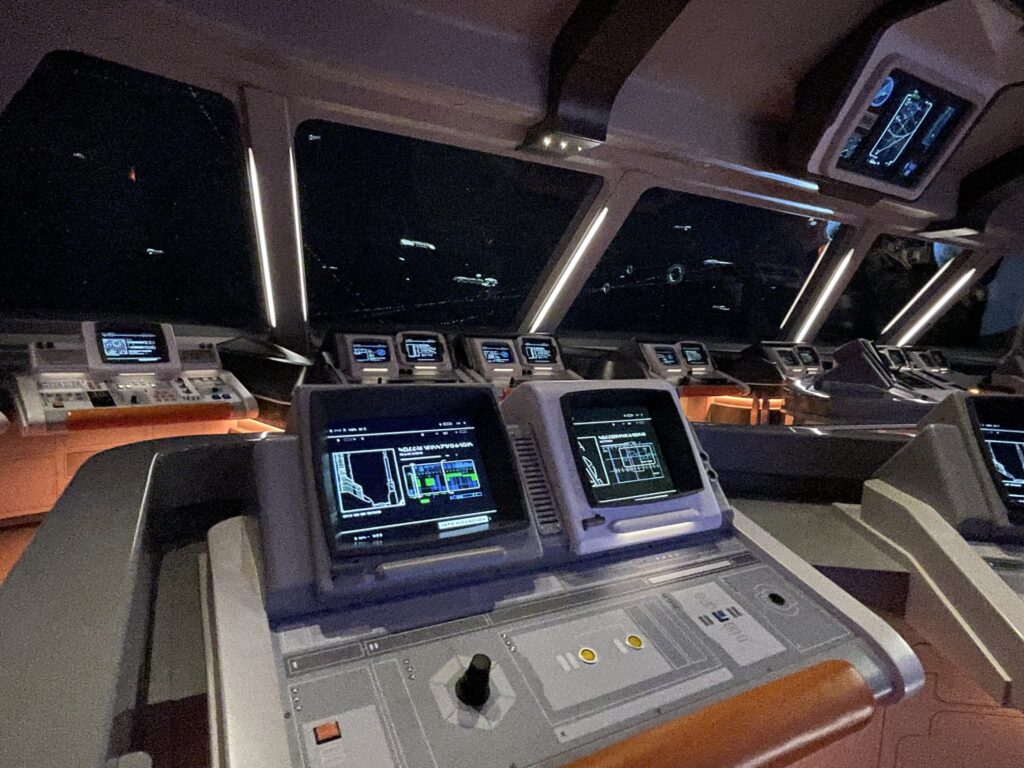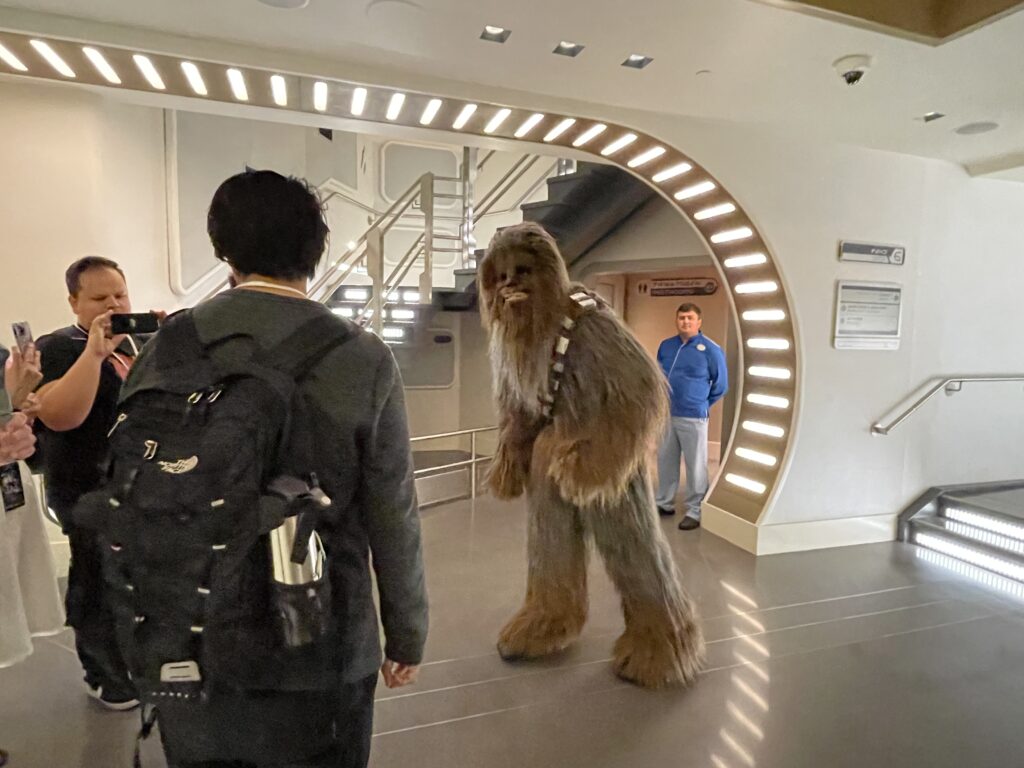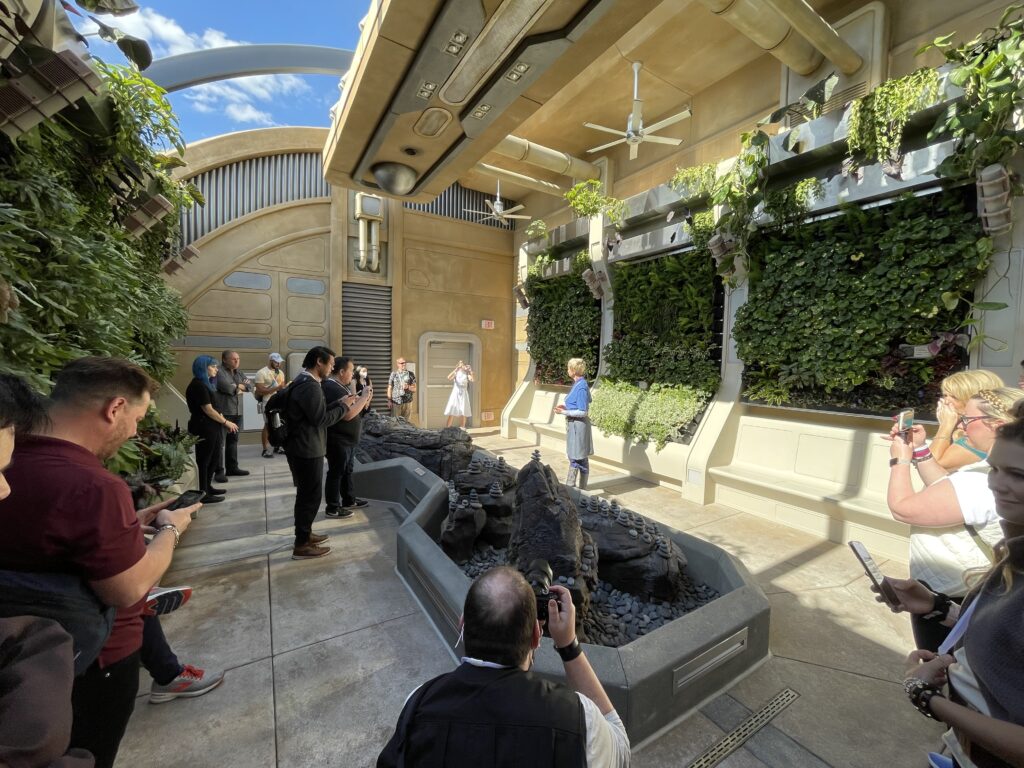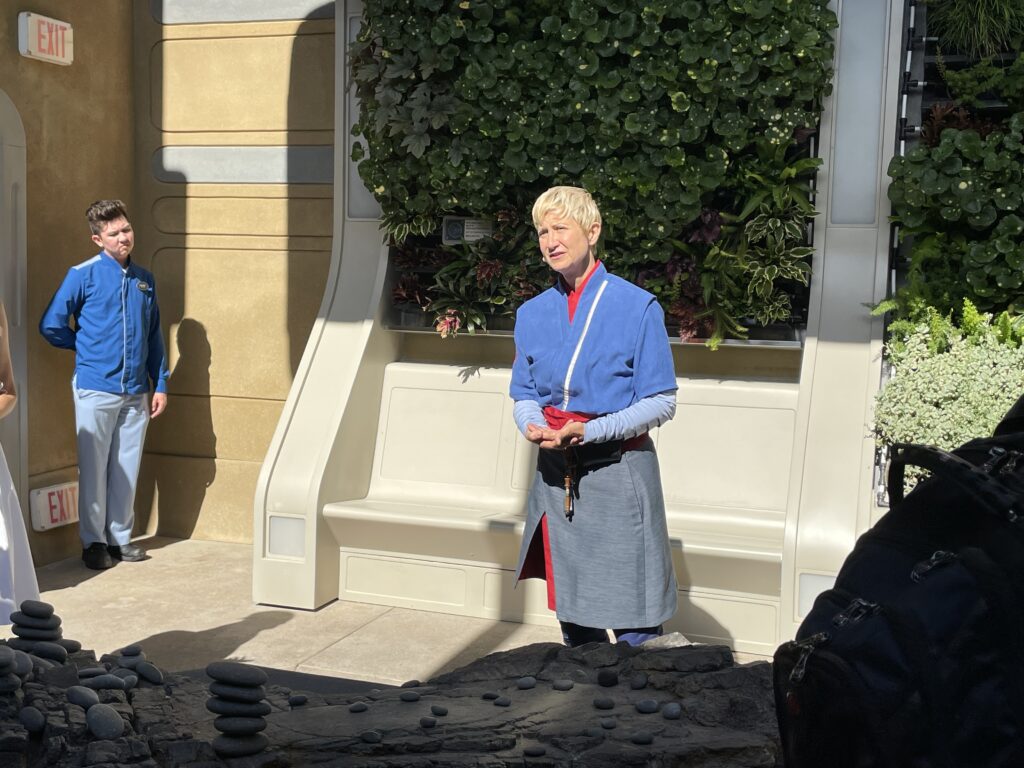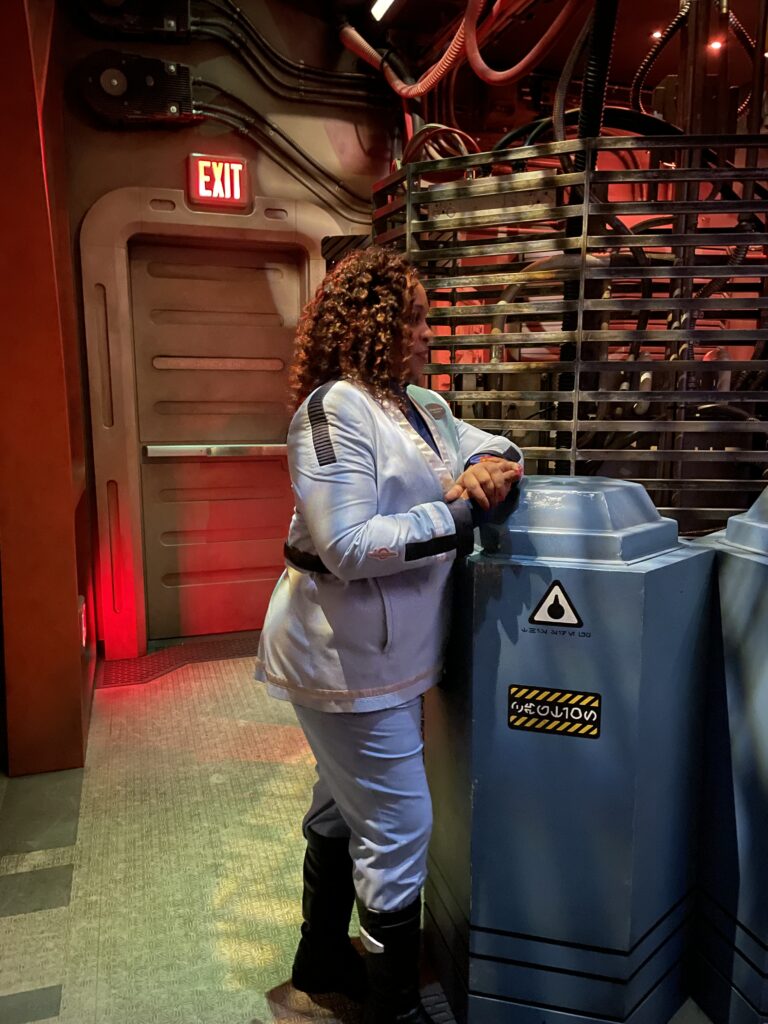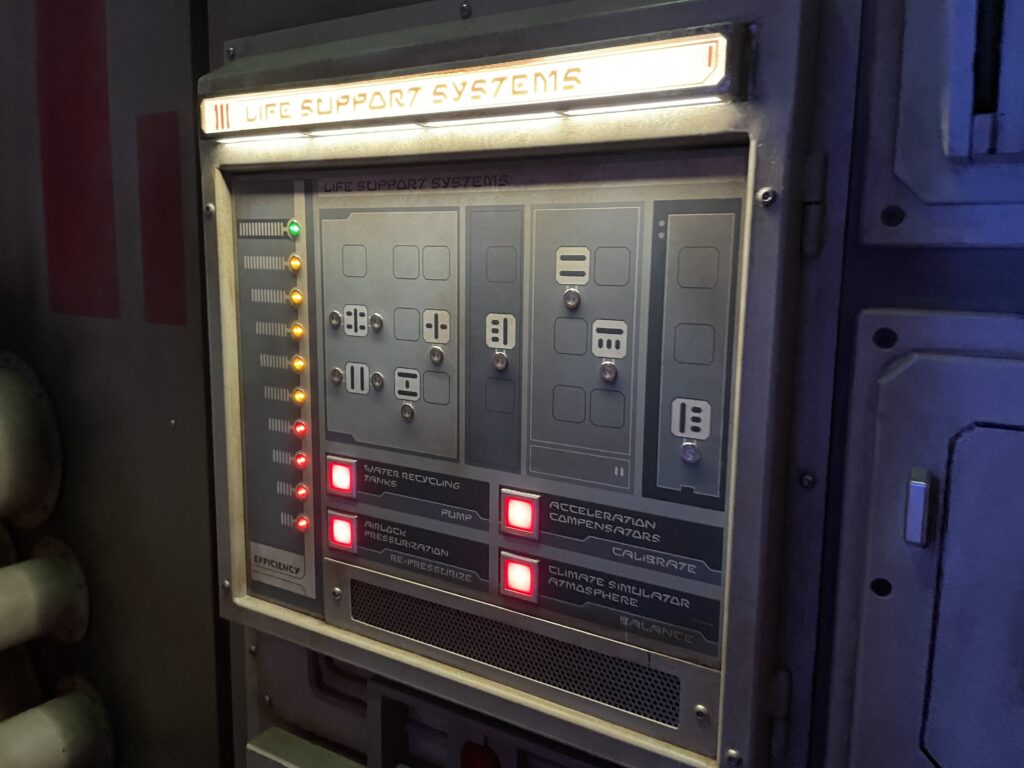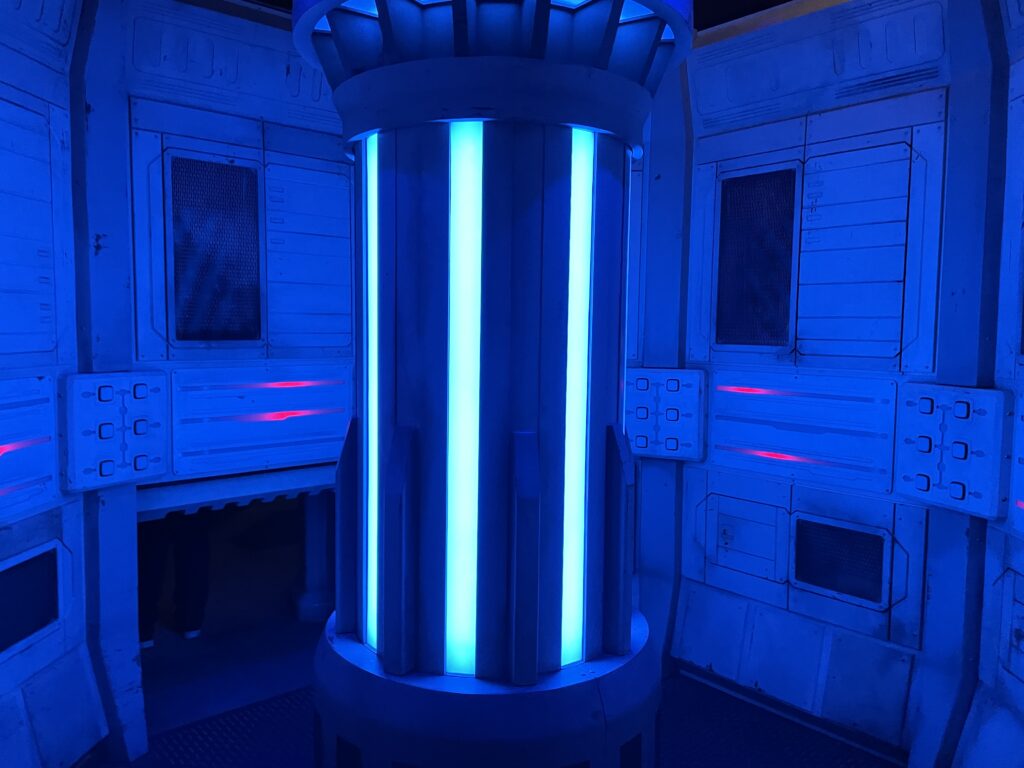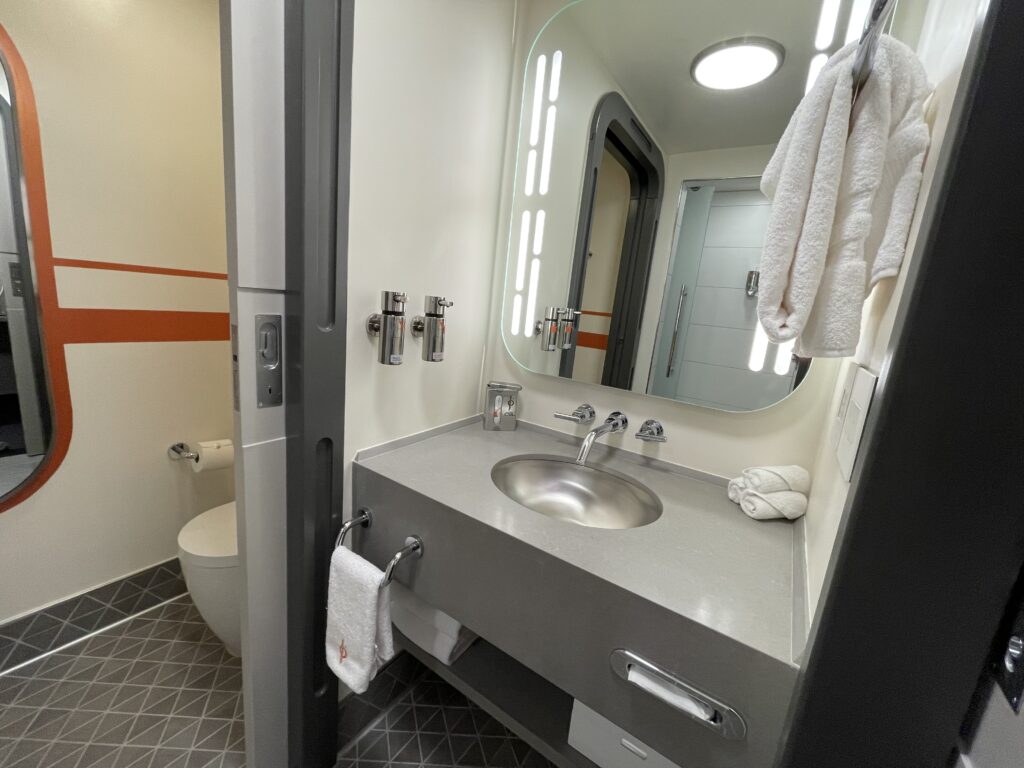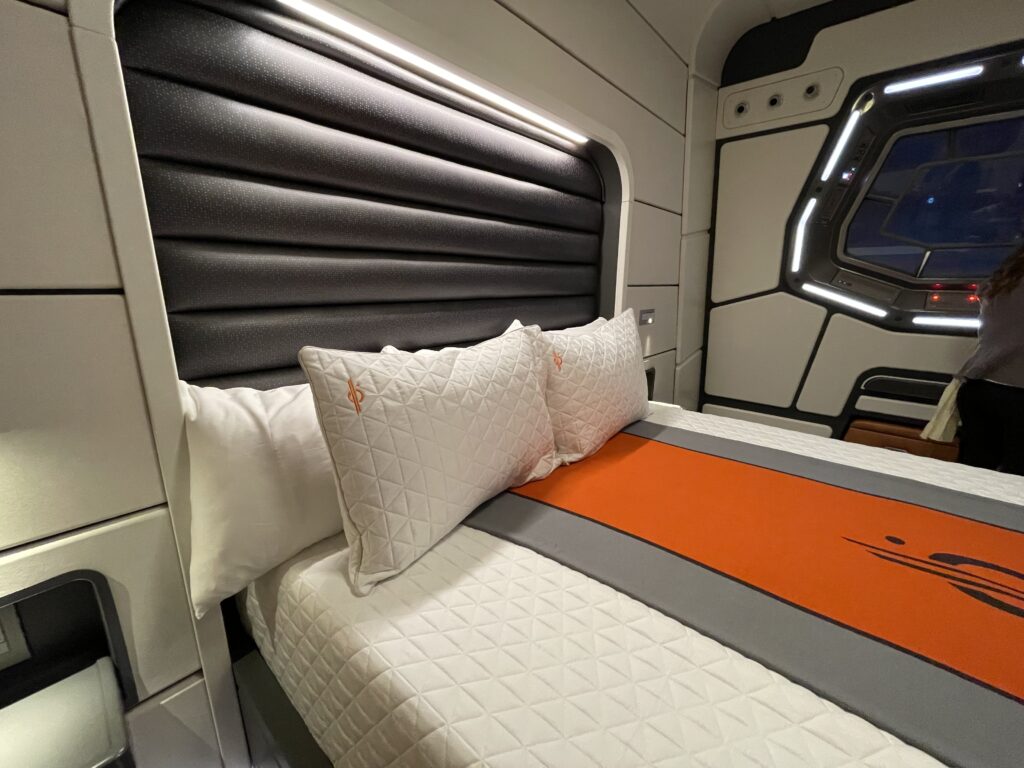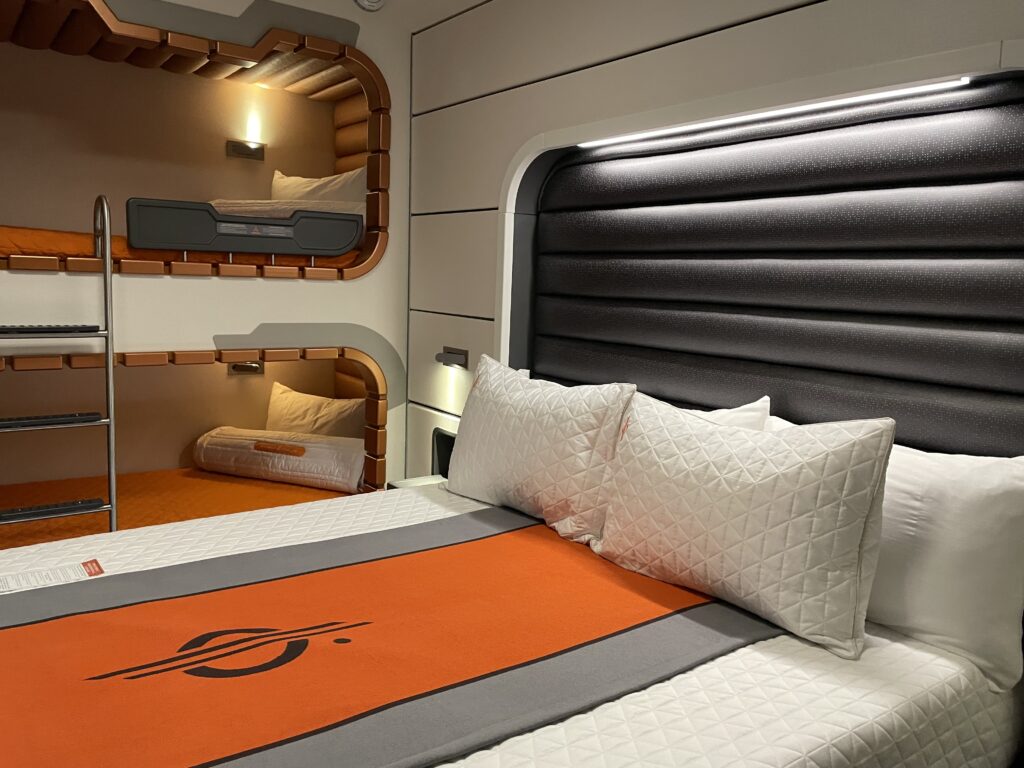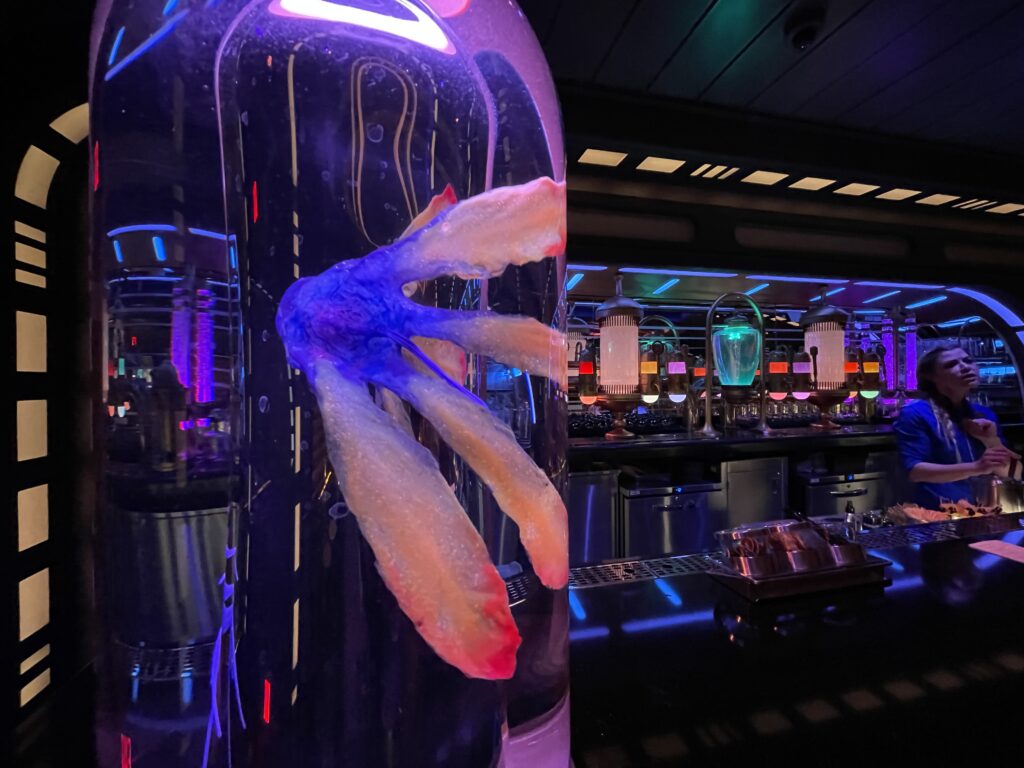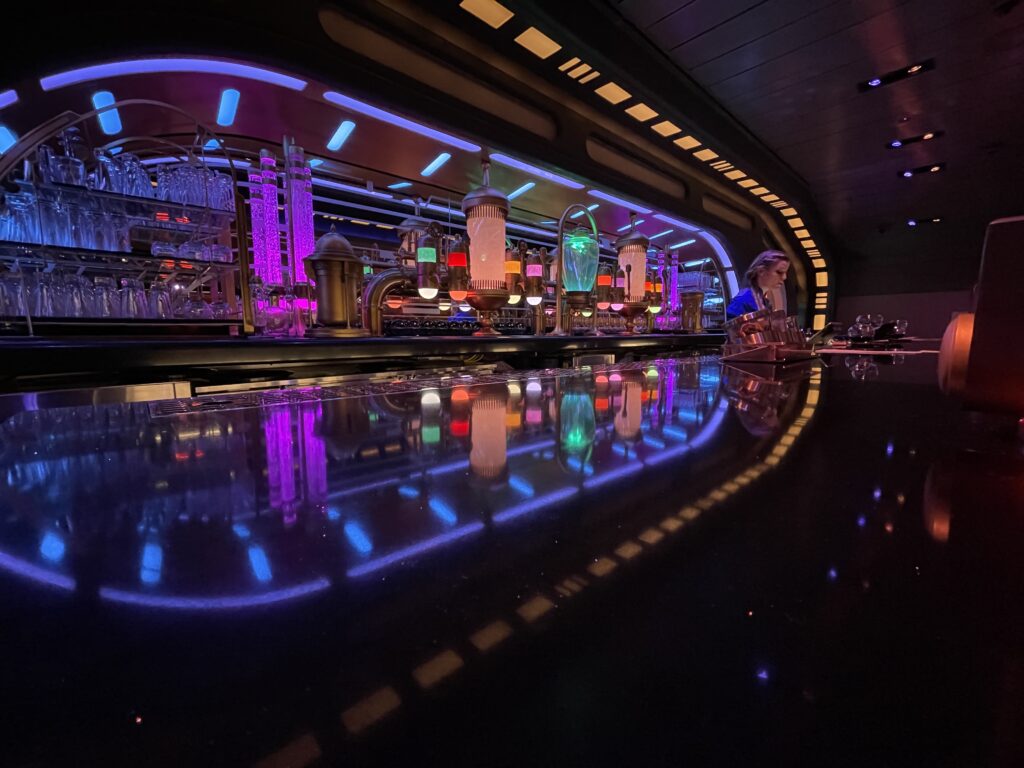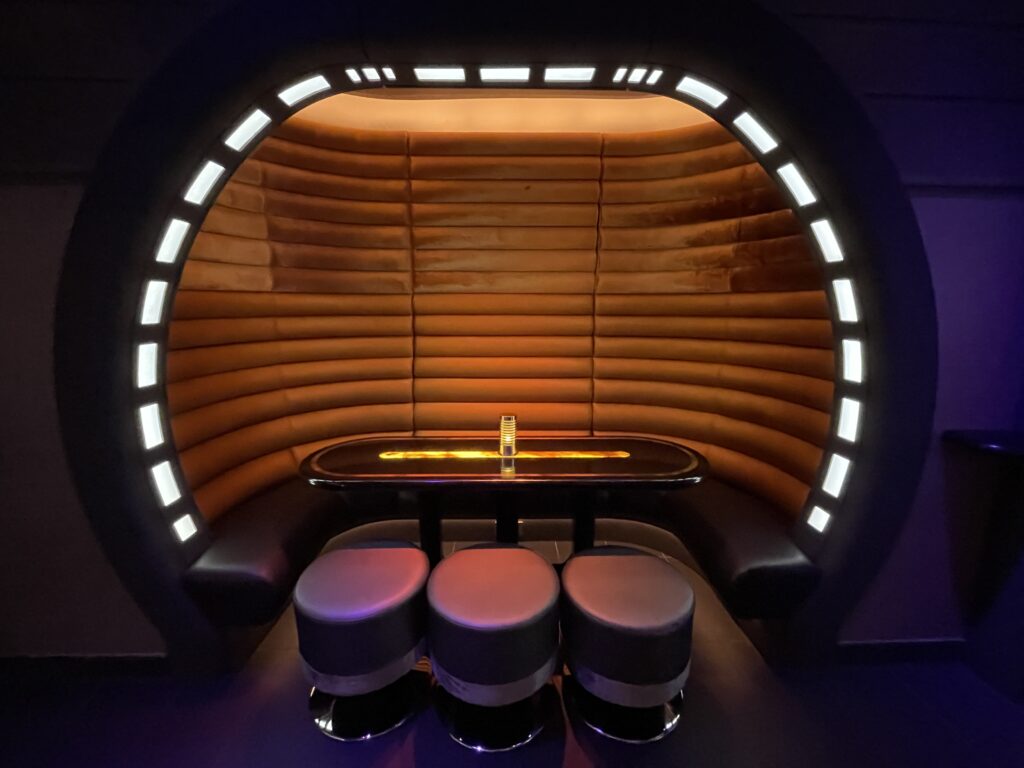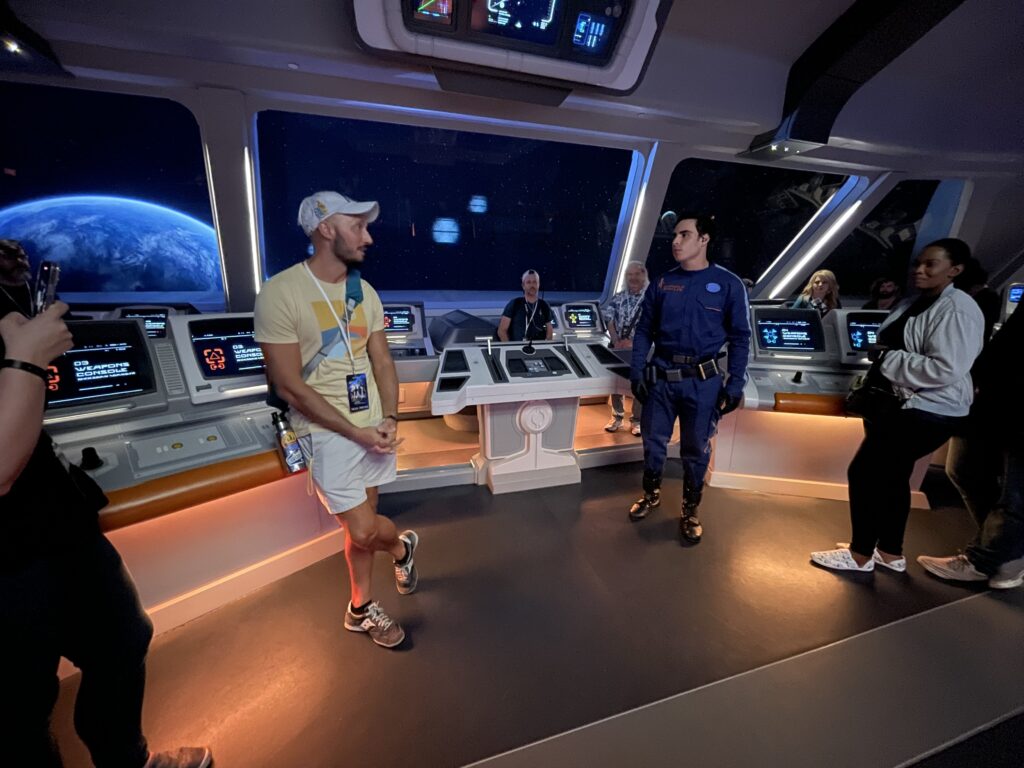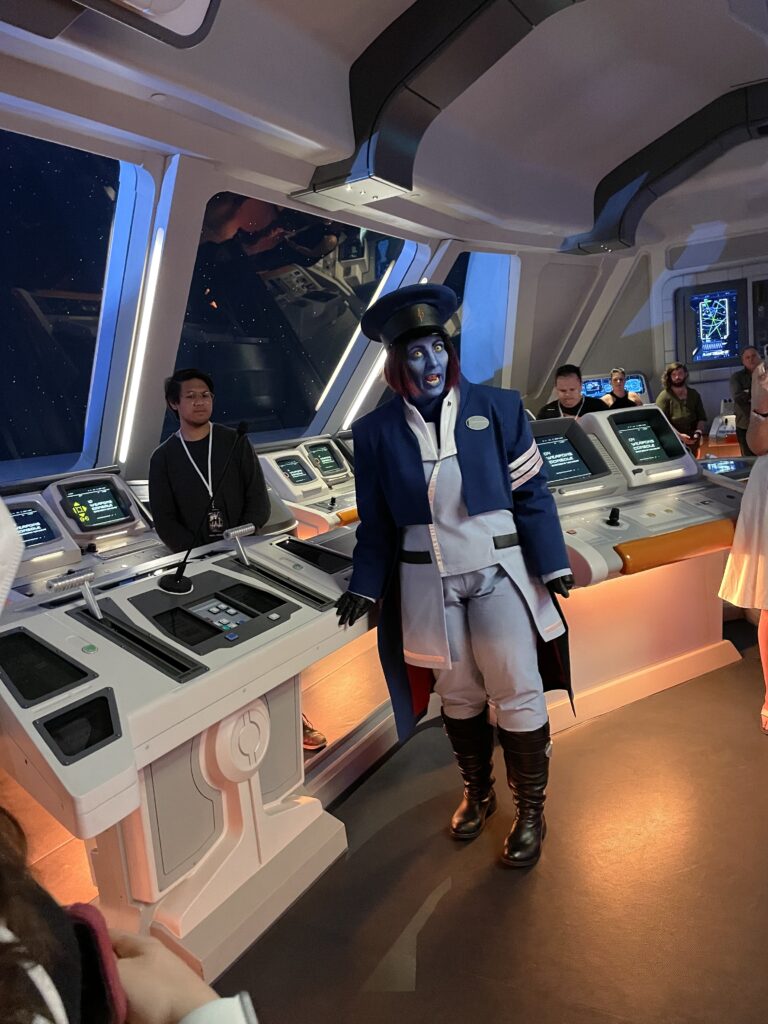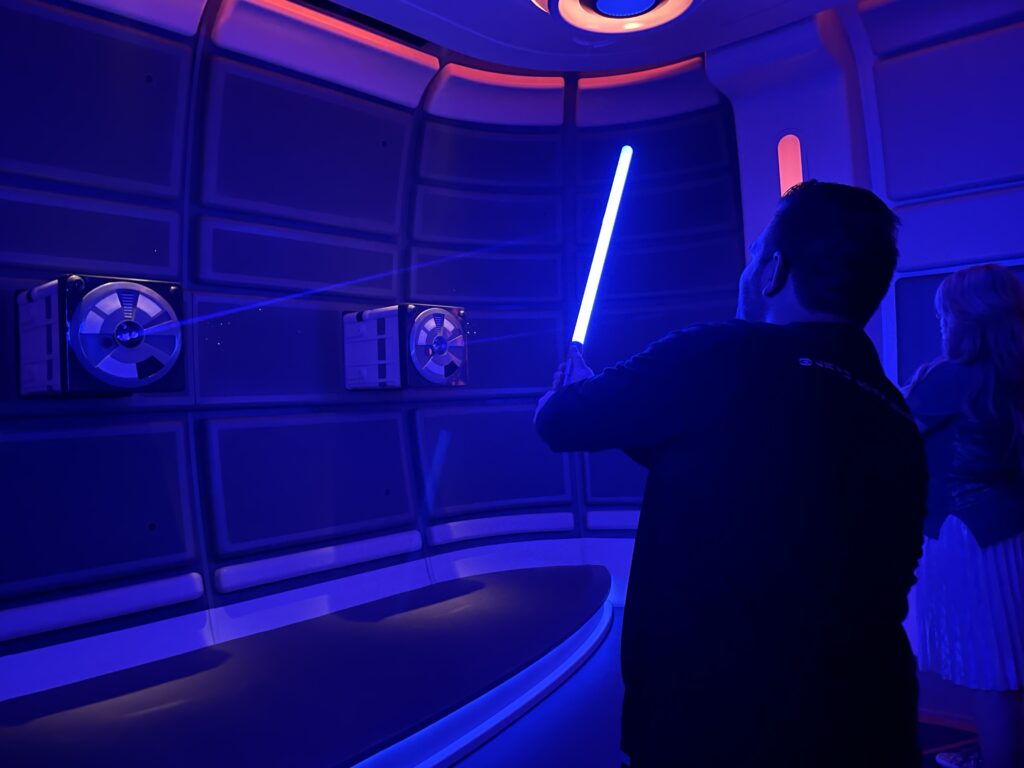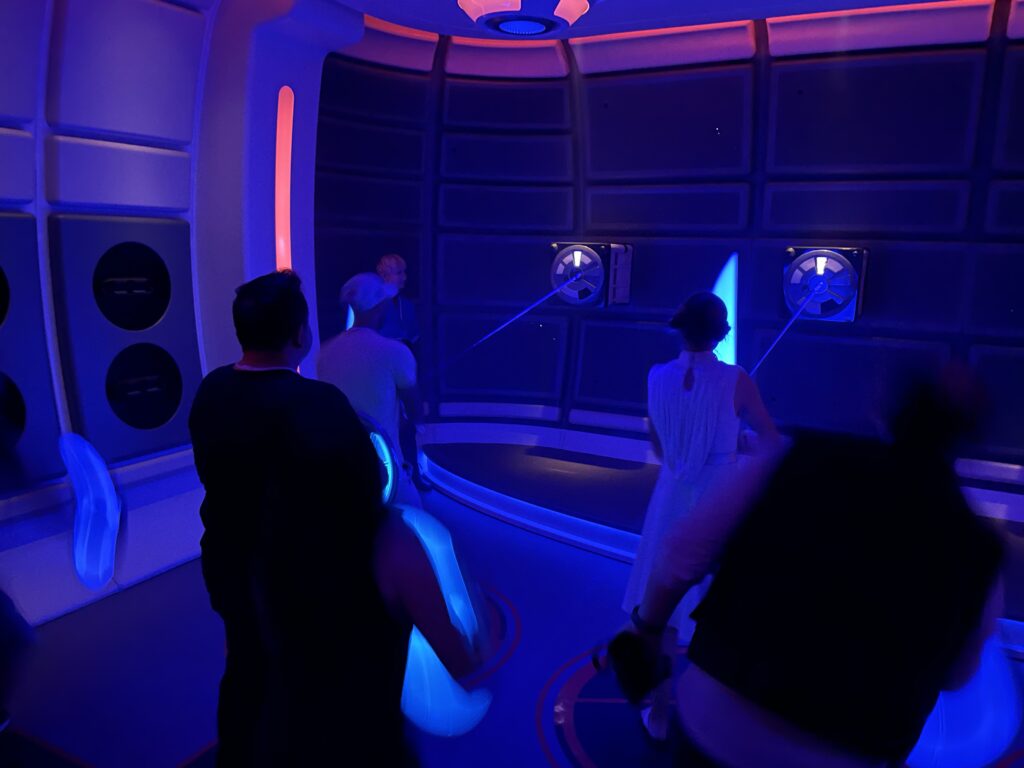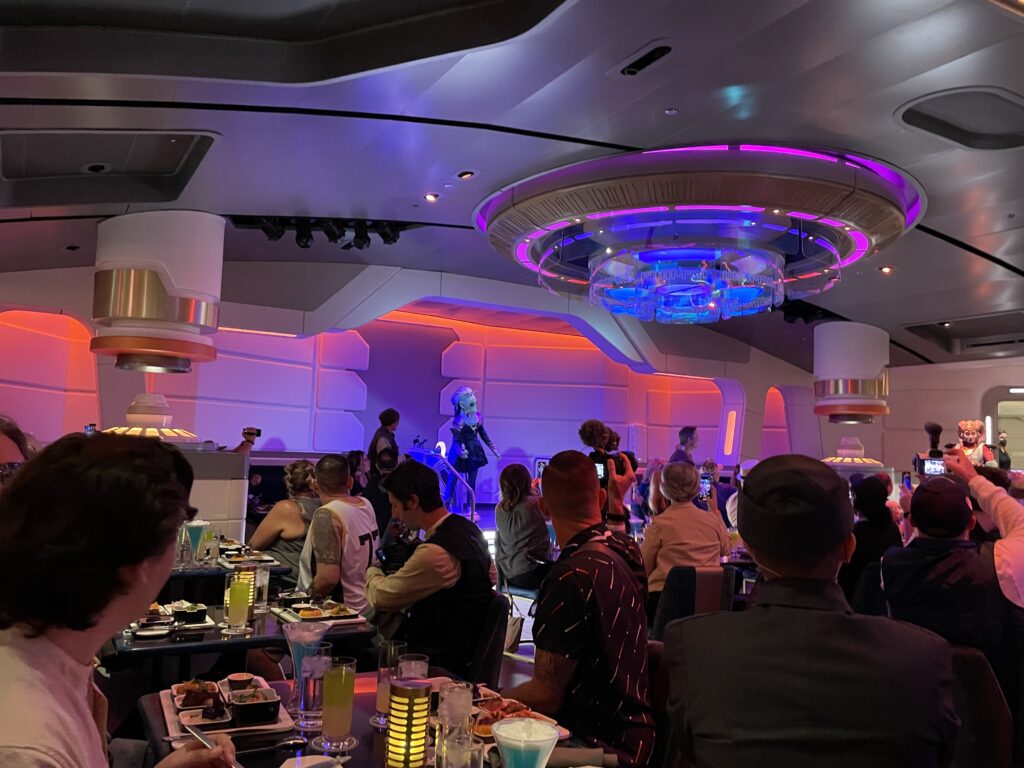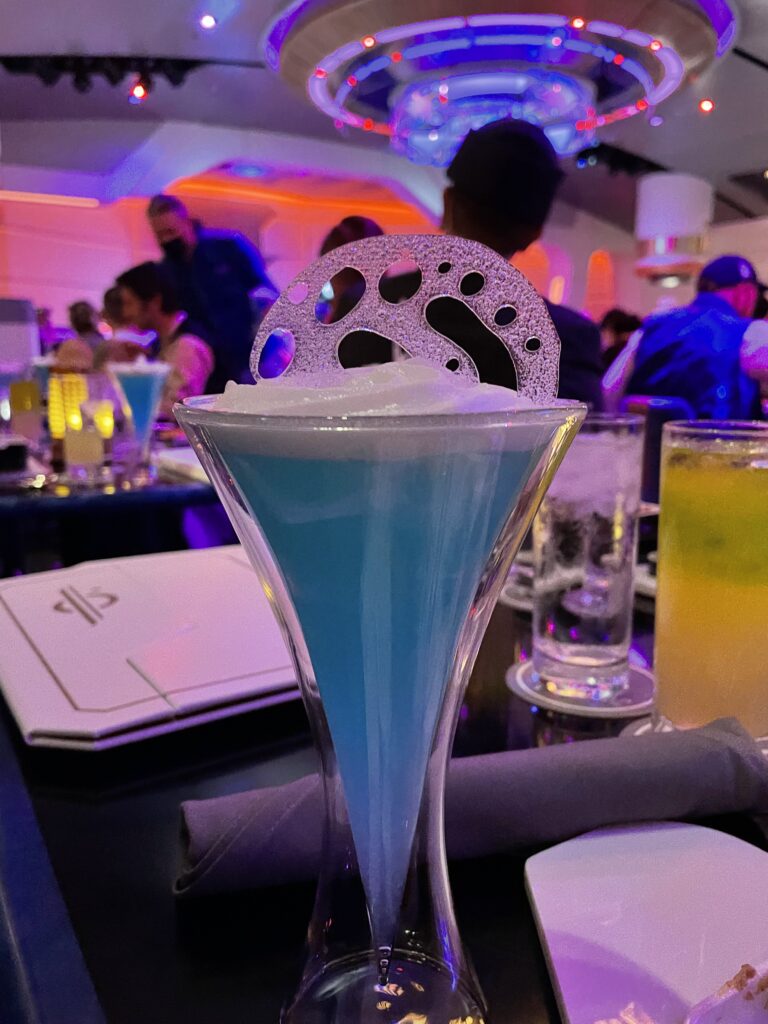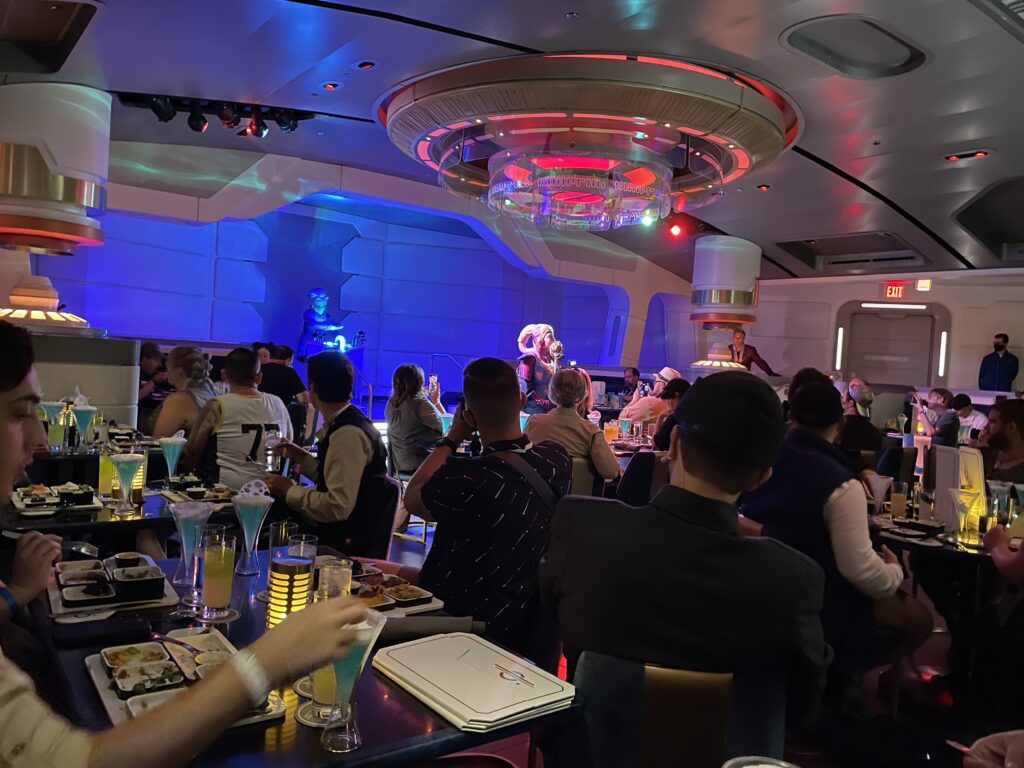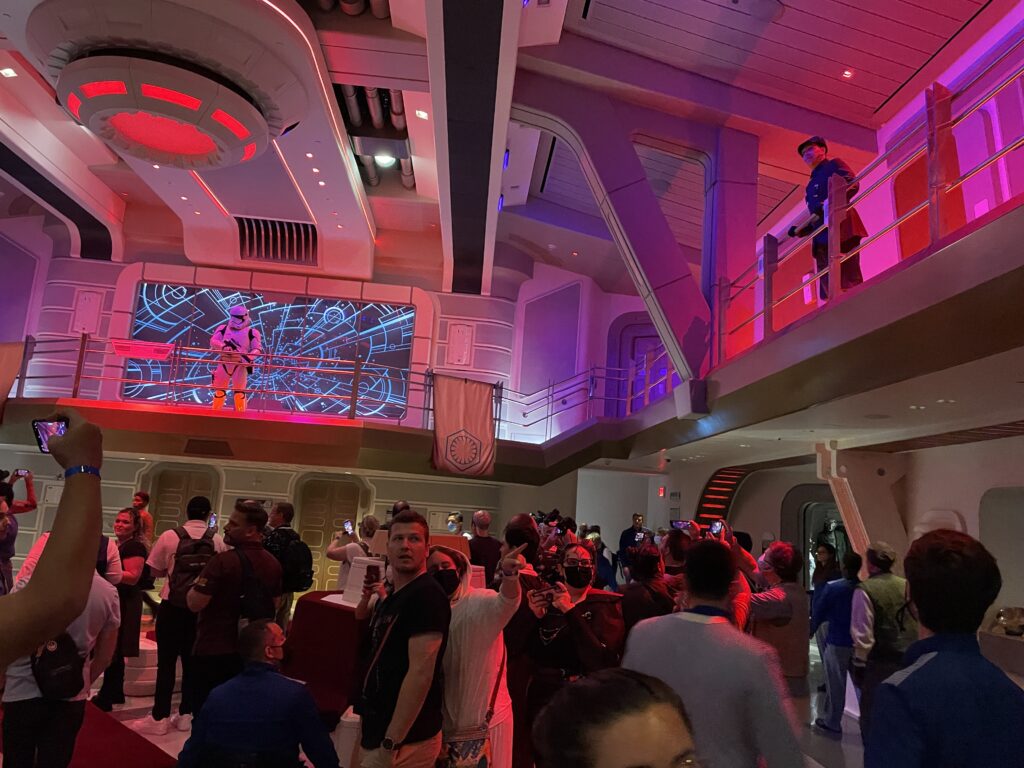Inside Disney’s Star Wars: Galactic Starcruiser
The following article largely sticks to readily available information about Star Wars: Galactic Starcruiser and avoids any major spoilers about the plot or experience. Nevertheless, it does contain information and details about the experience that a potential Jedi might choose to avoid learning about prior to their own voyage.
“It’s not a hotel,” Ann Morrow Johnson states firmly, referencing Star Wars: Galactic Starcruiser. “It’s a first-of-its-kind vacation experience.” The Disney Executive Producer and Executive Creative Director has been working on developing the Galactic Starcruiser for over six years, designed alongside and in concert with the Star Wars: Galaxy’s Edge land at Disney’s Hollywood Studios theme park in Orlando, Florida. But what kind of vacation experience is she actually talking about?
Drawing heavily on the concept of an oceanic cruise, Galactic Starcruiser is much more than just a journey through outer space. At its heart it is immersive theater writ large — a story set in the world of Star Wars that plays out over the course of two nights and a day and a half of action. It’s hard to imagine any other experience that comes close to this level of detail, interactivity and length of time.
The Galactic Starcruiser brings together the best parts of cosplay, interactive gaming, escape rooms, advanced technology and special effects, all under the banner of the Disney-owned Star Wars IP. In a way it’s like an intergalactic version of a renaissance faire, where the lines between actor and audience are blurred, inasmuch as each audience member wants it to be.
Technically, Galactic Starcruiser also provides the essential services of a hotel: comfortable lodging, delicious food, luxury retail and entertainment — though they are so wrapped up in the themed and narrative elements of the experience, it’s understandable why calling it a hotel would be a great disservice.
Understanding the story
According to Portfolio Creative Executive at Walt Disney Imagineering Scott Trowbridge, the Galactic Starcruiser “was designed for people who love Star Wars, and for people who love people who love Star Wars.” That feels true. Someone ignorant of or disinterested in the Star Wars story could easily get pulled into the deep narratives surrounding them, or they might not and choose to simply enjoy the environment and perks of a two-night getaway. Nevertheless, having at least a basic understanding of Star Wars lore makes a big difference in appreciating the full experience. Depending on which category you fall into, the following may or may not make sense.
As the story goes, guests who are booking the Star Wars: Galactic Starcruiser are actually booking a two-night stay aboard the Halcyon starcruiser, a luxury vessel providing a relaxing cruise around the galaxy.
Guests arrive on the afternoon of day one to the entry terminal, a concrete entrance both futuristic and brutalist in form. Valets take their bags and guests proceed down a long hallway to a launch pod that takes them directly up to the Halcyon spaceship. The pod doors open to the ship’s main atrium, a two-story space that serves as a central gathering place during the trip. The launch pods are located at roughly four o’clock. Five to seven o’clock is the ship’s bridge — a window-filled room looking out onto the galaxy, and an important location throughout the trip. At nine o’clock is the ship’s bar and lounge. A staircase at ten o’clock goes up to a mezzanine balcony, inaccessible to guests. Elevators to the sleeping cabin levels and the dining hall level (and other mysterious places on the ship) are at the top of the room. A small gift shop can be found at one o’clock, and a snack bar, well stocked with complimentary inter-planetary delights, is at three o’clock.
Once all guests are safely aboard the Halcyon, the first of several group events occurs. The ship’s captain and cruise director appear on the balcony above the atrium and welcome guests aboard. Hapless ship mechanic Sammie also makes an appearance, advising that the ship has been boarded by the First Order, and the pleasant cruise around the galaxy suddenly becomes more complicated. The First Order is certain there are Resistance sympathizers on board and the meta-story for the rest of the cruise becomes the essential Star Wars trope of good (Resistance) versus evil (First Order). What happens next is largely up to how involved each guest wants to become in the narrative and how they choose to experience Star Wars: Galactic Starcruiser. Which side each guest chooses to align themselves with will lead them down drastically different paths, all of which converge in a grand finale scene at the end of night two.
Understanding the experience
To better understand Galactic Starcruiser, it’s important to know the various components of the experience and how they all work together to produce a truly immersive world for guests to inhabit. Each element is saturated with story — both in terms of theming and content — for guests to explore.
Ship spaces
The Halcyon is equipped with many standard cruise ship components, including the aforementioned atrium, which serves as the theatrical space for both the welcome and finale events, as well as other story-specific moments.
The Crown of Corellia Dining Room offers buffet breakfasts and lunches as well as two scheduled table-service dinner times. Guests enjoy a live concert performance from intergalactic superstar Gaya on the first night of the cruise. Dinners tend to be interrupted by interludes from the Captain, stormtrooper entrances, or other narrative-driven events.
A rather genius design innovation is the Climate Simulator room, an advanced simulation area of the ship created to replicate the climate of the planet guests are about to visit, in this case Batuu. Since Batuu’s climate conveniently seems to mirror that of Central Florida, so does the Climate Simulator room. In other words, it’s an outdoor courtyard and a nice escape from being in the darkness of space for extended periods.
The Sublight Lounge offers a place to gather and sip on some of the galaxy’s more interesting libations or sit and play at the holo-sabacc table, a holographic card game.
The final regularly accessible location is each guest’s cabin. Although the ship contains several larger suites, the majority of the lodging cabins feature a well-designed room that can sleep up to five with viewports that look out into space. The view is rendered in real-time so that if the ship goes into hyperspace, or if it enters an asteroid field, guests will see that through their cabin viewport, just as they would on any other ship window. As expected, the view on the starboard side is different from that on the port. The rooms are well appointed, with a television that can (remarkably) access programs from across the galaxy, a relatively large bathroom and an emergency exit in the event of a real unscripted emergency.
Tech tools
Galactic Starcruiser employs two main technologies that help bring guests into the story onboard the Halcyon. D3-O9 is a digital assistant droid that appears on a small screen in each private cabin. She responds to voice commands and prompts (think Alexa or Siri, only with more conversational skills and virtual chrome).
D3-O9 lives in the screen inside the guest cabin, providing information about the cruise, as well as being a source of historical data for guests to probe with their questions.
The other tool is the Star Wars: Datapad, part of the Play Disney Parks app available on each guest’s smart device. The Datapad relays information about happenings on the ship, often covert operations that each guest can choose to participate in (or not).
The two digital elements are highly integrated with the other components of the experience, such that if a guest has a private conversation with the Captain, for example, shortly after that chat they may receive a message on their Datapad from the Captain inviting them to meet up with her later on, say in the ship’s cargo bay, for a covert mission. Similarly, D3-O9 can play an informative role and reveal further elements of the story.
How does it all work? Disney Imagineers won’t say, although they claim the system is largely autonomous, without a human “game master” controlling elements. Presumably this means information is compiled through location-based tracking and other technologies.
Guests concerned about privacy can opt out of D3-O9 and the Datapad, instead relying on a printed agenda, though doing so will cause them to miss out on much of the storytelling that takes place during the voyage.
It’s worth noting that Disney has publicly announced that D3-O9 will only be available for a limited test period, perhaps indicating the technology system might be swapped out, upgraded or eliminated completely at some point in the future.
Communal touchpoints
The ship’s welcome event is one of a handful of scheduled group interactions for passengers. Think of them as key touchpoints, or anchors, for the overall story. Everyone has the opportunity (though not obligation) to go through bridge training, lightsaber training, group dinners, a shore excursion to the planet Batuu during day two (a visit to the Galaxy’s Edge land inside Disney’s Hollywood Studios park), and a finale experience that satisfactorily wraps up all the storylines in the atrium at the end of the second night.
Beyond those core touch points, what happens during the rest of the cruise is up to each passenger. By engaging with crew onboard the ship and via the technologies mentioned, guests can be invited to embark on various adventures that take them to different corners of the ship to complete interactive missions that help take them deeper into the story.
For example, guests might be asked back to the ship’s bridge area to help dock and hide a Resistance ally, sent to help fight against the First Order. Or they might be given a private tour of the ship’s Engineering Room and then secretly called into service to help program the ship’s systems to override any commands from the First Order.
Guests don’t have to comply. They can defect to the First Order, they can be duplicitous or they can decide in the moment whom they support.
Gaming elements
In crafting Galactic Starcruiser, one of Disney’s main goals was to create an experience that blends fully immersive storytelling with gaming elements. The two scheduled training experiences every guest is invited to — bridge training and lightsaber training — both utilize simple (though very different) games to move the story forward.
Bridge training brings roughly 50 guests to the ship’s controls to educate them on the various systems onboard the Halcyon, like docking drones, weapons systems, shield controls and more. Stations present individual puzzles and challenges to solve that impact the larger operation. Unsurprisingly, these skills come in handy later on when navigating asteroid fields or receiving special cargo. The games range from simple matching to more complex video game-like maneuvers with joysticks and dials, and according to Disney there are layers of difficulty, so more skilled players can still be challenged.
Lightsaber training provides instructions on how to use a lightsaber, utilizing a beam of light as target practice. Four guests at a time go through the training, with additional guests using shields to provide backup support. Each time the lightsaber or shield successfully blocks the beam of light, the device responds with vibration and lighting.
Aside from those two scheduled training experiences, guests who engage with the story will have the opportunity to take part in a variety of other experiences that serve both to advance the storyline but also provide additional gaming experiences. The Engineering Room operation, for example, puts pairs of two in a situation where they must simultaneously move large switches on a wall to match a lighted display panel.
One of the journey’s major gaming components takes place during the scheduled shore excursion to Batuu. After boarding transport vehicles from the Halcyon, guests arrive at Batuu with their Datapads and, depending on what activities they participated in or characters they interacted with aboard the Halcyon, they are assigned a range of tasks and missions to complete while visiting Batuu. Datapads are constantly updated based on what the guest does or doesn’t do while in the park, and their actions can result in activations within the land, even impacting their experience aboard the Millennium Falcon: Smugglers Run attraction. Furthermore, what they do on Batuu impacts opportunities presented to them back on the Halcyon later that day.
A talented cast
None of this would be nearly as engaging if it weren’t for the very talented cast and crew of the Halcyon. Though it’s easy to focus on the theming and technology, it’s critical to understand just how important people power is to the success of Galactic Starcruiser.
Disney famously refers to all its employees as cast members, playing a role on the stage of the parks and resorts. But this truly takes the role of cast member to another level. The “front line” cast members who provide essential services onboard the ship such as cleaning, serving, concierge, and so on, perform all these services with the panache and courtesy they would were they stationed at the Contemporary or Polynesian resorts. But they do it all in the additional service of the Halcyon’s evolving narrative. They support the storyline as well as the primary characters on the cruise.
Those main actors are remarkable. In addition to playing out all the scripted elements, they must remember guests, ad lib with them and transit between different scenes with ease. While immersive theater actors such as those at Sleep No More perform for several hours over the course of an evening, Halcyon crewmembers keep it going for nearly 48 hours. It’s no small feat and it’s truly the entire crew of the Halcyon that makes the experience special.
Placing Halcyon in context
From an industry perspective, Star Wars: Galactic Starcruiser is a natural evolution of immersive themed experiences. In recent years, Universal and Disney have both excelled in developing themed lands that more fully incorporate a single IP into all aspects of the land. The Wizarding World of Harry Potter and Pandora – The World of Avatar led the way in creating story-driven experiences that are reflected in everything from food and merchandise to bathrooms.
Star Wars: Galaxy’s Edge moved the needle even further, incorporating guest’s handheld devices into the experience, providing different layers of interactivity for guests to uncover. Galactic Starcruiser builds on that and expands that interactivity to an impressive magnitude, taking what might have been a half-day experience and turning it into a fully enveloping world that, with only a moderate suspension of disbelief, can truly captivate and engage a guest for nearly two full days.
Importantly, all this takes place without the need to wear VR goggles or 3D glasses. While media elements are pervasive throughout the experience — after all, every window on the ship looks out onto a screen — they are fully integrated and it’s nearly impossible to “see the edges.” The technology that a guest directly uses is their own personal device. It’s already a part of the lived experience, so it doesn’t feel contrived or unnatural.
With Star Wars: Galactic Starcruiser, Disney has invested heavily in a hybrid built-and-digital environment, ostensibly nudging the themed entertainment trajectory more firmly away from virtual worlds and into ones inhabited by real people, with in-person gaming and face-to-face interactions. It’s a bold move, but boldness is often required to advance new ideas and develop entertainment experiences that hopefully lead to broader, immersive (and intergalactic) horizons.


